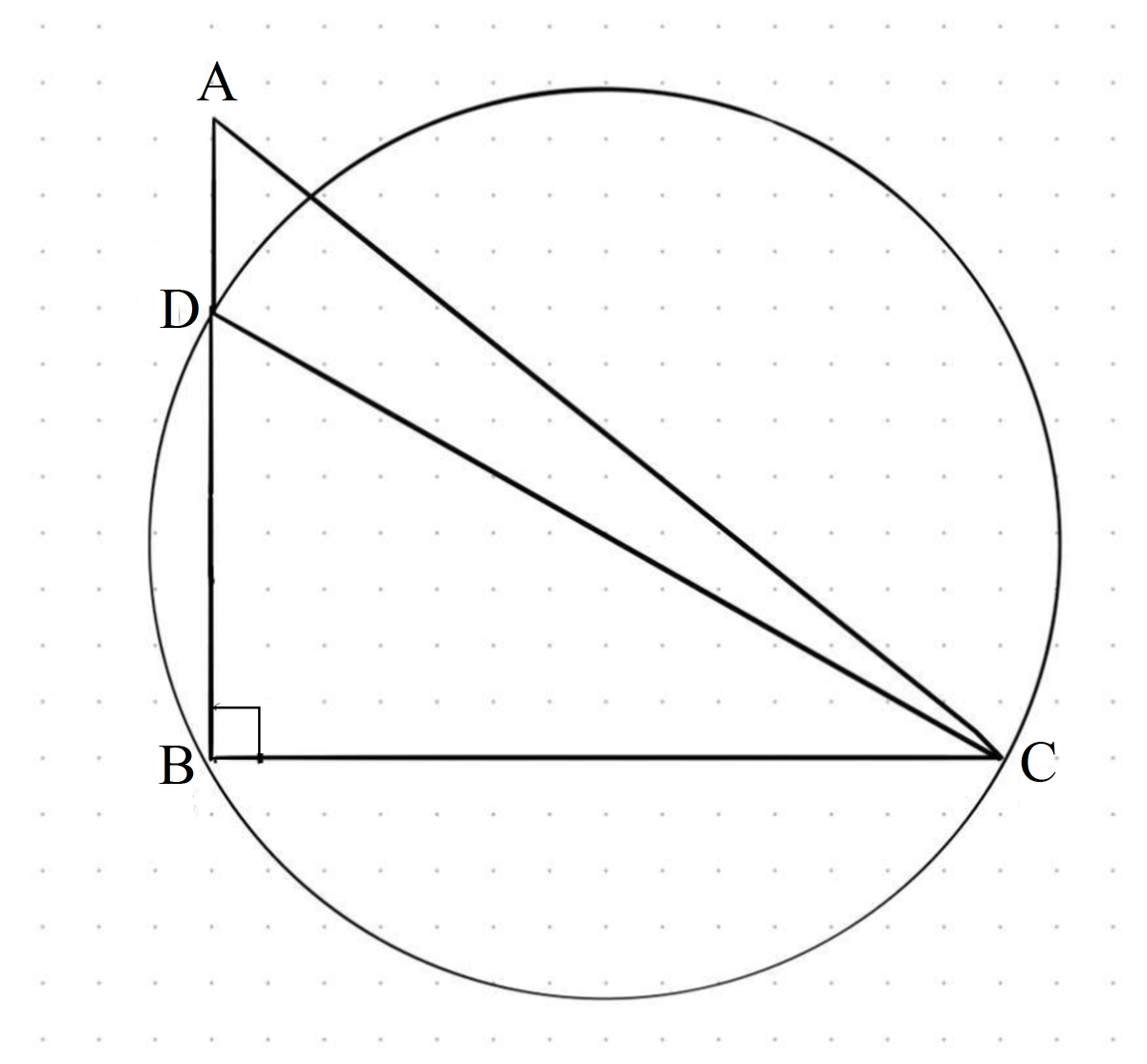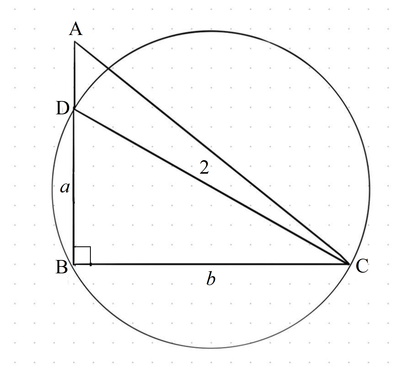Triangle and Geometric Series

The figure shows a circle with radius 1 and a right △ A B C with A B = B C . Segment A B cuts the circle at D . The side lengths of △ D B C form a geometric progression . If the area of △ A B C can be written as A − B , input A × B .
The answer is 5.
This section requires Javascript.
You are seeing this because something didn't load right. We suggest you, (a) try
refreshing the page, (b) enabling javascript if it is disabled on your browser and,
finally, (c)
loading the
non-javascript version of this page
. We're sorry about the hassle.
2 solutions

Since ∠ B of △ D B C is 9 0 ∘ , this means that D C is the diameter of the circle, therefore D C = 2 . Let A B = a and B C = b . Since a , b , and 2 are in a geometric progression, we have 2 a = b 2 ⟹ b = 2 a . By Pythagorean theorem ,
a 2 + b 2 a 2 + 2 a − 4 ⟹ a = 4 = 0 = 2 − 2 + 4 − 4 ( − 4 ) = 5 − 1 Since a > 0
The area of △ A B C , [ A B C ] = 2 b 2 = a = 5 − 1 , ⟹ A + B = 5 + 1 = 6 .
Let ∣ A B ∣ = ∣ B C ∣ = a , ∣ B D ∣ = r a , ∣ C D ∣ = a r = 2
Then, a 2 + r 2 a 2 = a 2 r 2 = 4
⟹ r 4 − r 2 − 1 = 0
⟹ r 2 = 2 5 + 1
⟹ a 2 = r 2 4 = 2 ( 5 − 1 )
So, area of △ A B C is 2 a 2 = 5 − 1
Therefore A = 5 , B = 1 , A × B = 5 .